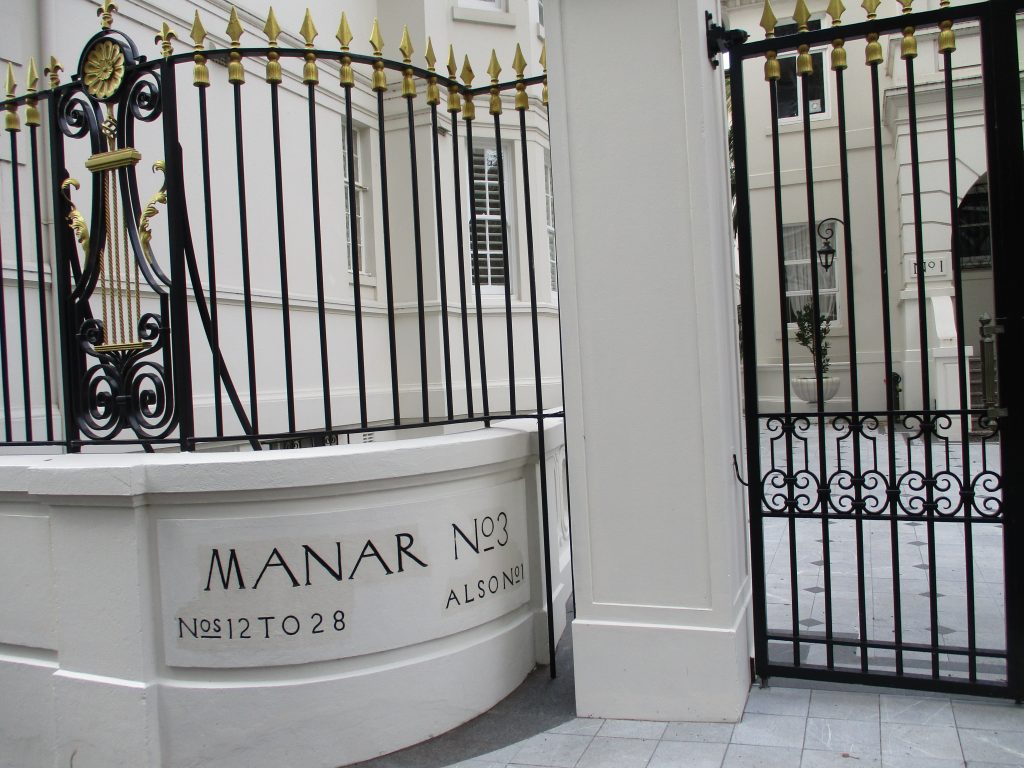WHAT’S IN A NAME?

Many inner-city buildings, particularly apartment buildings, have specific names, not just street numbers, unlike many suburban homes.
This practice probably originates from the fact that homes and apartment buildings were not legally required to have street numbers until very recently.
So a name was a way of quickly identifying properties. And it meant something to owners.
To others it gave the impression that particular buildings were so important that a mere number was insufficient to do them justice or was irrelevant.
In the early nineteenth century Macleay Street, Potts Point, consisted of only seven buildings according to the first map by Thomas Mitchell, surveyor, so street numbers were redundant.
Many buildings in the 2011 postcode area have had their original names provided by owners. Consequently, when a property changed ownership sometimes the building name also changed.
The choice of names often came from overseas origins, from associations with country properties, or gave the property added prestige or were from Latin, the scholarly language of litterati, for example.
Consider this top twelve:
- Tresco, built 1886-1873, at 97 Elizabeth Bay Road, Elizabeth Bay, by Thomas Rowe and named after the second largest island, Tresco Island, in the Scilly Isles group in UK. Thomas Rowe was more than an architect. He was man of merit. He was a former cabinet maker and builder who emigrated from Penzance near the Isles of Scilly off the English Cornish coast, which his mother’s ancestors once governed, including Tresco Island.
- Mayfair, 6 McDonald Street, Potts Point, whose name imparts the building with an added prestige and association with an upper-class area of inner London.
- Omnia, 226 Victoria Street, Latin for “everywhere”, apt considering its 360-degree panoramic vistas of everywhere else.
- Pomeroy, 14 Macleay Street, Elizabeth Bay, named after the former historic home on the site whose name is now carved into its sandstone facade.
- Habitat, Latin for “He/she lives”, at 1 McDonald Street, Potts Point.
- The Yellow House, once used by famous Australian artists such as Brett Whitley and named for its current exterior colour but which is also a homage to Vincent van Gogh, the famous Dutch post-impressionist artist and his own yellow house at 1 Avenue de Stalingrad, 13200 Arles, France.
- Manar, 40 Macleay Street, named after the original owner’s country property in the Southern Highlands which was itself named after the Gulf of Mannar (with a slightly different spelling) between the west coast of Sri Lanka and the south eastern tip of India in the Coromandel Coast region, where the family had built their fortune harvesting pearls.
- Cahors, 117 Macleay Street, with its French Royale connection and named after the quaint French Provencale village of the same name. Its sky-blue facade colour is the same colour given to the village by Henry IV circa 1582 after they harboured him. It was the King’s own Colour L’officiel.
- Wintergarden, 67 Darlinghurst Road, whose garden entrance foyer was originally an all year-round indoor garden.
- The Levens, 29-33 Ithaca Road, Elizabeth Bay, a modest set of five apartments built in 1927 by Mr M Leventhal and named tendentiously by its owner after himself.
- Boomerang, 42 Billyard Avenue, Elizabeth Bay, named in recognition of the logo of the owner’s Australian music publishing house of the same name whose owner, Mr Alberts, built the dwelling for himself, and
- Jenner House, 2 Macleay House, Potts Point, originally named Stramshall after the owner’s, Mr Hordern’s, English home village. It was previously known as Khurageen and then later named the Fleet Club during World War II, where nearby Royal Australian Navy Offices stationed at Garden Island enjoyed a drink and lunch etc.
There are many more names and fascinating vignettes but behind every named building, each a silent sentinel to our heritage, is a story of interest and intrigue, adding a unique layer of history to Potts Point, Australia’s first suburb.
by Andrew Woodhouse
Heritage Solutions





